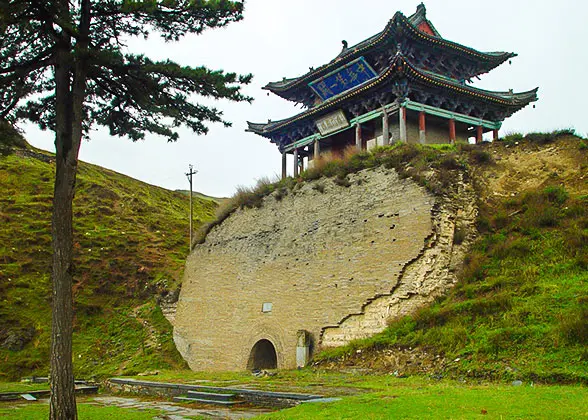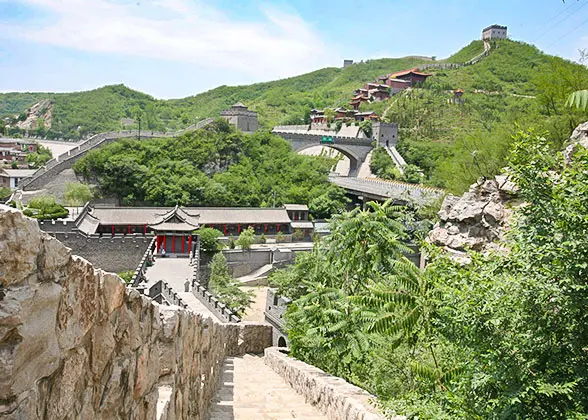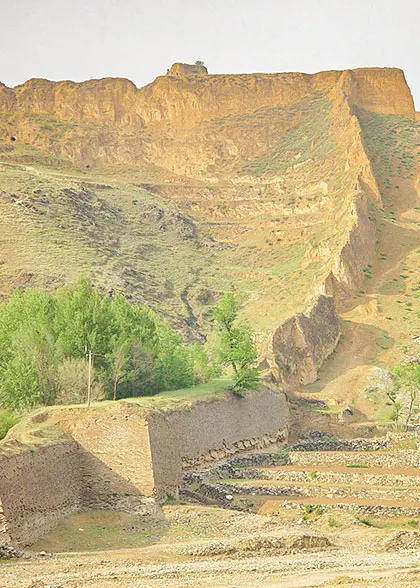Great Wall in Shanxi
The Great Wall in Shanxi scatters in its northern region, along the northern border of ancient China. The area was once important military outpost; hence many famous passes were built along the Shanxi Great Wall, including Yanmenguan, Niangziguan, Pianguan, Ningwuguan, Guguan, and Pingxingguan.
Basic Facts of the Shanxi Great Wall
![]() In Shanxi Province, more than 2,200 miles (3,541 kilometers) of the Great Wall were built in ancient times and now the best preserved sections stretch approximately 930 miles (1,497 kilometers), and are distributed across nine cities and over 40 counties.
In Shanxi Province, more than 2,200 miles (3,541 kilometers) of the Great Wall were built in ancient times and now the best preserved sections stretch approximately 930 miles (1,497 kilometers), and are distributed across nine cities and over 40 counties.
![]() Many dynasties throughout history built their own sections here from the Warring States (475–221 BC) to the Qing Dynasty (1644 –1911) spanning more than 2,000 years.
Many dynasties throughout history built their own sections here from the Warring States (475–221 BC) to the Qing Dynasty (1644 –1911) spanning more than 2,000 years.
![]() Sections built before the Southern and Northern Dynasties (420 – 589) are hard to trace. The recognizable sites were built after the foundation of the Sui Dynasty in 581. Among all, those built in the Ming Dynasty (1368 – 1644) are most common sections measuring 557.08 miles (896.53 kilometers).
Sections built before the Southern and Northern Dynasties (420 – 589) are hard to trace. The recognizable sites were built after the foundation of the Sui Dynasty in 581. Among all, those built in the Ming Dynasty (1368 – 1644) are most common sections measuring 557.08 miles (896.53 kilometers).
Why Have So Many Dynasties Left Their Respective Walls Here?
Historically speaking, Shanxi has always been the border line between Han nationality and nomadic tribes. Its security was closely related to the safety of the central plain. Although housing a part of Taihang Mountain as its natural barrier, several Great Wall sections were still ordered to be constructed along the ridges to further consolidate the western frontier of the state.
Now along the existing sections, the followings are well preserved and attract many tourists:
 |
| Yanmenguan Pass, Datong |
Yanmenguan was the most important pass in Shanxi against the northern nomadic tribes. The pass city is located at the bottom of the valley and walls stretch upward from the gate towers along the hills like iron arms protecting the city. Hidden inside the deep and serene mountain, there won't be too many visitors and you can well admire the surrounding scenery of this old fortress. The best time to visit Yanmenguan is spring, when the pass is like an old castle among the sea of lush plants. But the autumn and winter create a solemn and lonely feeling with an eyeful of gold leaves or pure white snow.
Niangzi Pass is translated as the Women Pass, located in Yangquan City of Shanxi. Legend has it that a woman scout led by Princess Pingyang, the daughter of Tang Emperor Gaozu (566 – 635), used to garrison here and hence the name. It used to be the bloody battlefield but now, the clear river at its foot, green mountains, and stone buildings make this place more like a joyful water village.
 |
| Guguan Pass |
It is the only existing well-preserved stone Great Wall in China, nine miles (14 kilometers) away from Niangzi Pass and next to the highway. With a history of nearly 2,500 years, it is one of the earliest Great Wall sections in China. Looking down from the top, modern highway mingles well with old ramparts. The history and presence seems to be harmoniously fused at this place.
Together with Yanmenguan and Ningwuguan, they are collectively called the most important passes of the Outer Great Wall. Leaning along the Yellow River, the second longest river in China, Pianguan has resisted numerous attacks of nomads. Nowadays, this once glorious fortress was etched and looks like an aged soldier standing at the turning point of the turbulent river, recalling the past military life.
 |
| Great Wall in Shanxi |
It used to be the most vital fortress supporting Yanmenguan to the east and Pianguan to the west. Unlike the two passes holding the natural barrier like river or mountain, Ningwuguan, located in lower land, was the preferred access of northern tribes to intrude the central plain. Nowadays, it serves as the entrance to a small county. The ordinary residences and crisscrossing alleys have already erased the traces of wars. The once invincible pass seems to be a harmonious part of the peaceful life of the simple county.
Located at Pingxing Mountain, Pingxingguan occupied a strategically important position with Hengshan Mountain standing loftily to the north and Wutai Mountain to the south. The pass is nearly 1,100 yards (1,006 meters) wide. The entrance gate is a little over thirteen feet (four meters)high and about nine feet (three meters) wide. Sadly, the gate tower is in ruins and the entire pass has suffered much erosion over the years.
Datong gathers the relics of the wall constructed in several dynasties. Most parts are the remains of that built in the Ming Dynasty. The wall in Datong consists of inner and outer two lines, among which fortresses like Shoukou Fortress, Zhenbian Fortress, Desheng Fortress and Xinping Fortress are well-preserved and worth a visit.
Protection is Urgently Required
Due to the affects of earthquakes, flood, and weathering for years, most sections in Shanxi are badly damaged. Human behavior like shoveling bricks or cutting off ramparts speeds up the pace of disappearance of the Great Wall. Most of the sections of the Southern and Northern Dynasties are hard to find. Even for the Ming Dynasty sections which are in a comparatively good condition, only 8.2% are well preserved while 74.1% of ramparts are in poor condition; in some places only foundations remain. It's time for the government and local dwellers to do something to protect this treasure of human beings.
![]() Further Reading: Shanxi Travel Guide
Further Reading: Shanxi Travel Guide